Best Luxury Kenya Safaris
From the wide grasslands of the Masai Mara to the majestic wildlife that roams within it, there is no place like Kenya for a classic safari. And with A&K, who pioneered the top luxury safari in this very region in the 1960s, a Kenya luxury safari becomes the experience of a lifetime.
On the best Kenya luxury safari on offer, venture deep into the Masai Mara, a reserve that contains the country's highest concentration of big game, including iconic creatures like lion, wildebeest and elephant. Meet Maasai warriors and Samburu tribe members, learning about their traditions and skills, which are inextricably tied to life in the savanna. The Samburu Game Reserve, home to several rare northern species, is another must on any Kenya camping safari.
With A&K, a top Kenya safari package means days abuzz with bush walks, evening drives aboard comfortable 4x4 vehicles and nights spent under a blanket of stars. An A&K Kenya luxury safari is also an opportunity to discover top local conservation efforts, such as an elephant research center or a tree-planting community project. Experience nature's astounding beauty and the rich culture of the Mara with A&K’s best Kenya luxury safari packages.
Best Time To Go
December - March, June - OctoberClimate Charts
Time Zone
ET +8 hoursFlights
Nairobi (NBO)Ways to Experience Luxury Travel to Kenya

Tailor Made Kenya Safaris
Elevate your travel experience with private Tailor Made luxury safari tours to Kenya. Created by our experts, each bespoke tour to Kenya is designed just for you and your preferences with customized luxury Tailor Made adventures, accommodations, private air and more.

Kenya Small-Group Tours
Experience A&K's best-in-class luxury small-group tours to Kenya. Led by an acclaimed Resident Tour Director®, each unique journey is expertly designed to offer incredible insider access and an intimate small-group experience.
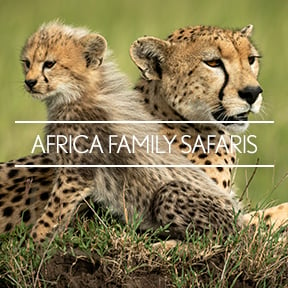
Family Kenya Safari Vacations
Travel together on unforgettable luxury family vacations and safaris to Kenya created by our family adventure experts. Choose from small-group family journeys or custom private Tailor Made travel, designed just for your family and ideal for holidays and celebrations.

Journeys Featuring Private Air
See and experience more on exclusive Wings Over the World Journeys. The ultimate small-group travel experience, these luxury journeys feature itineraries packed with insider access and the ease of privately chartered flights between destinations.
Learn More about Kenya Safaris

Masai Mara
The Masai Mara Game Reserve is home to 400 to 500 bird species and 95 animal species, including all of the great predators. The Mara lies within the territory of the Maasai, who help administer the park and protect it from poachers.

Samburu
Located in arid northern Kenya, the Samburu Game Reserve borders the Ewaso Nyiro River, a key gathering area for wildlife. In addition to lion, elephant, giraffe and buffalo, it is home to several species only found north of the equator, including Grevy's zebra and the long-necked gerenuk.

Amboseli
Amboseli National Park lies in the shadow of Mount Kilimanjaro, Africa's highest mountain and a dramatic backdrop for one of Kenya's most spectacular displays of wildlife. Amboseli is home to some of the largest breeding elephant bulls in Africa, who share the plains with lion, leopard, cheetah, buffalo and other game.

Chyulu Hills
One of the youngest ranges in the world, the Chyulu Hills roll across eastern Kenya, overlooking vast grassy plains and topped by rainforest and lush meadows. With over 750,000 acres under wildlife management, the Chyulus are one of the great wilderness areas of Africa.

Laikipia
The Laikipia Plateau formerly consisted of farms and cattle ranches until landowners banded together to establish a conservation area. Today, Laikipia boasts an array of private game reserves and luxury safari camps, along with game populations that thrive within their protected boundaries.

Ol Pejeta Conservancy (Nanyuki)
Ol Pejeta is a 90,000-acre private wildlife habitat, located on the equator near the British-settled town of Nanyuki. Find the "Big Five" here, along with cheetah, Grevy's zebra and chimpanzee - the only chimpanzee to be found in all of Kenya.
Explore More of Kenya on Safari with A&K

Game Drives, Five-Star Service and the "Big Five": A Day on Safari with A&K
Experience a taste of adventure with the company that pioneered the modern safari. Get a glimpse of how A&K combines luxury, a half-century of experience and unmatched local know-how to create a journey of a lifetime, and learn about the "Big Five," the animals on every safari-goer's must-see list.

Witness East Africa's Great Migration for a Front-Row Seat to a Living Natural Wonder
Every year, hundreds of thousands of wildebeests and zebras, their newborn young in tow, make their annual migration across Kenya and Tanzania in search of fresh grazing — with predators dogging their every step. Learn the ins and outs of this extraordinary spectacle from a bona fide A&K expert guide.

Which A&K African Safari Is Right for You?
Africa is a land of stunning variety, and A&K offers journeys to match. Read our handy guide for choosing the safari that's just right for you.

CNN's Brooke Baldwin Finds Kenya with A&K
CNN journalist Brooke Baldwin followed President Obama to Kenya in 2015, and came away forever altered by a uniquely welcoming and dazzling country.

From Head to Foot: Your Guide to Dressing for Your Safari with A&K
Shoes or boots? Darks or lights? How much is too much? Between sun and wind, fluctuating temperatures and pesky insects, packing for safari is both an art and a science. Check out our handy guide on what to wear on safari, and pack for your journey with confidence.
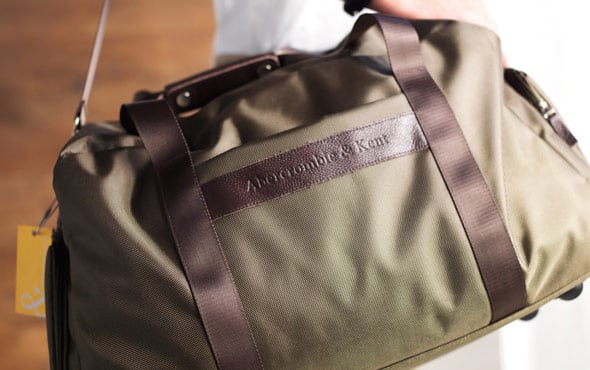
Pack for Adventure with A&K's Custom-Built Safari Duffel — A Perfect Fit for Your Journey
All guests travelling on an A&K safari adventure are provided with a complimentary, custom-crafted A&K Duffel. This bag has been specially designed for your journey: it's perfectly sized to fit all your safari essentials while still meeting airline checked baggage size restrictions for Africa.
Frequently Asked Questions
-
When is the best time to visit Kenya?
The best times to visit Kenya are December through March (when the climate is mild, mostly dry and the game viewing is at its finest) or during the dry season from late June to October (when the Great Migration is at its peak in the Masai Mara). The main rainy season typically lasts from April to May with a shorter wet season during November. These rainy seasons draw fewer crowds while fostering abundant vegetation for grazing species. February marks the calving season for mammals such as antelope, affording a front row seat to the newborns’ first steps and interactions.
-
What is the Great Migration and when is the best time to see it?
The Great Migration is the largest animal migration in the world. Each year, more than two million animals (wildebeest, zebra, and gazelle) migrate in a clockwise direction across the ecosystems of the Serengeti (Tanzania) and the Masai Mara (Kenya). While this cycle continues throughout the year, August and September are the best times to see the Great Migration in Kenya and your chances of witnessing a river crossing are generally much higher. Come early October, the rainy season in Tanzania will commence, and the herds will embark on their return journey back to the Serengeti.The Great Migration is the largest animal migration in the world. Each year, more than two million animals (wildebeest, zebra, and gazelle) migrate in a clockwise direction across the ecosystems of the Serengeti (Tanzania) and the Masai Mara (Kenya). While this cycle continues throughout the year, August and September are the best times to see the Great Migration in Kenya and your chances of witnessing a river crossing are generally much higher. Come early October, the rainy season in Tanzania will commence, and the herds will embark on their return journey back to the Serengeti.
-
What are the best places to visit in Kenya?
Kenya offers world-class wildlife viewing in legendary game reserves such as the Masai Mara National Reserve. Kenya’s most popular safari destination, the Mara boasts the country’s highest concentrations of lions, wildebeest and elephants. Kenya’s Samburu Game Reserve is home to several rare northern species, such as Somali ostrich and Besia oryx. Renowned for its prolific elephant herds, Amboseli National Park also harbors an abundance of giraffes, zebras and cheetahs. Chyulu Hills National Park is known for its distinctive volcanic terrain, boasting one of the longest lava tubes in the world. Private conservancies like Oj Pejeta and Lewa Wildlife afford exclusive safari experiences, such as tracking lions with a research expert and after-dark game drives.Kenya offers world-class wildlife viewing in legendary game reserves such as the Masai Mara National Reserve. Kenya’s most popular safari destination, the Mara boasts the country’s highest concentrations of lions, wildebeest and elephants. Kenya’s Samburu Game Reserve is home to several rare northern species, such as Somali ostrich and Besia oryx. Renowned for its prolific elephant herds, Amboseli National Park also harbors an abundance of giraffes, zebras and cheetahs. Chyulu Hills National Park is known for its distinctive volcanic terrain, boasting one of the longest lava tubes in the world. Private conservancies like Oj Pejeta and Lewa Wildlife afford exclusive safari experiences, such as tracking lions with a research expert and after-dark game drives.
-
What are the Big Five in Africa?
The term “Big Five” refers to the five African animals on the must-see list of every safari adventure throughout Kenya, Tanzania, Botswana and South Africa. They include the lion, leopard, elephant, rhinoceros and Cape buffalo. The Big Five aren’t simply Africa’s topmost predators, but rather the continent’s five most challenging animals to track.The term “Big Five” refers to the five African animals on the must-see list of every safari adventure throughout Kenya, Tanzania, Botswana and South Africa. They include the lion, leopard, elephant, rhinoceros and Cape buffalo. The Big Five aren’t simply Africa’s topmost predators, but rather the continent’s five most challenging animals to track.
-
What is the difference between Kenya and Tanzania?
While Kenya is geographically smaller than Tanzania, its diversity of landscape and culture affords a wide range of activities including interactive conservation experiences and community visits to local tribes such as the Maasai. Kenya’s mountainous interior and arid northern regions harbor unique species found nowhere else. Tanzania’s majestic Mount Kilimanjaro, coffee plantations, tropical coastline and island paradise of Zanzibar distinguish it from its neighbor to the north. Broadly speaking, Tanzania’s climate tends to be more tropical than Kenya’s, with more lush, green landscapes. Given their proximity and intersection of the Great Migration, these two countries are often combined into one journey.While Kenya is geographically smaller than Tanzania, its diversity of landscape and culture affords a wide range of activities including interactive conservation experiences and community visits to local tribes such as the Maasai. Kenya’s mountainous interior and arid northern regions harbor unique species found nowhere else. Tanzania’s majestic Mount Kilimanjaro, coffee plantations, tropical coastline and island paradise of Zanzibar distinguish it from its neighbor to the north. Broadly speaking, Tanzania’s climate tends to be more tropical than Kenya’s, with more lush, green landscapes. Given their proximity and intersection of the Great Migration, these two countries are often combined into one journey.
-
Do I need a visa to visit Kenya?
Yes, an Electronic Tourist Visa (eVisa) is required for U.S. and Canadian passport holders. To apply online, visit evisa.go.ke/evisa.html.Yes, an Electronic Tourist Visa (eVisa) is required for U.S. and Canadian passport holders. To apply online, visit evisa.go.ke/evisa.html.
-
What do I wear on a Kenya safari?
Choose comfortable and casual clothing in natural, breathable fabrics that can be layered as the temperature fluctuates. For game viewing, wear neutral colors (but not camouflage, which is outlawed in game parks). Black, navy blue and other dark colors tend to attract insects. Smart casual attire is appropriate for evenings. Formal clothing is not necessary.Choose comfortable and casual clothing in natural, breathable fabrics that can be layered as the temperature fluctuates. For game viewing, wear neutral colors (but not camouflage, which is outlawed in game parks). Black, navy blue and other dark colors tend to attract insects. Smart casual attire is appropriate for evenings. Formal clothing is not necessary.
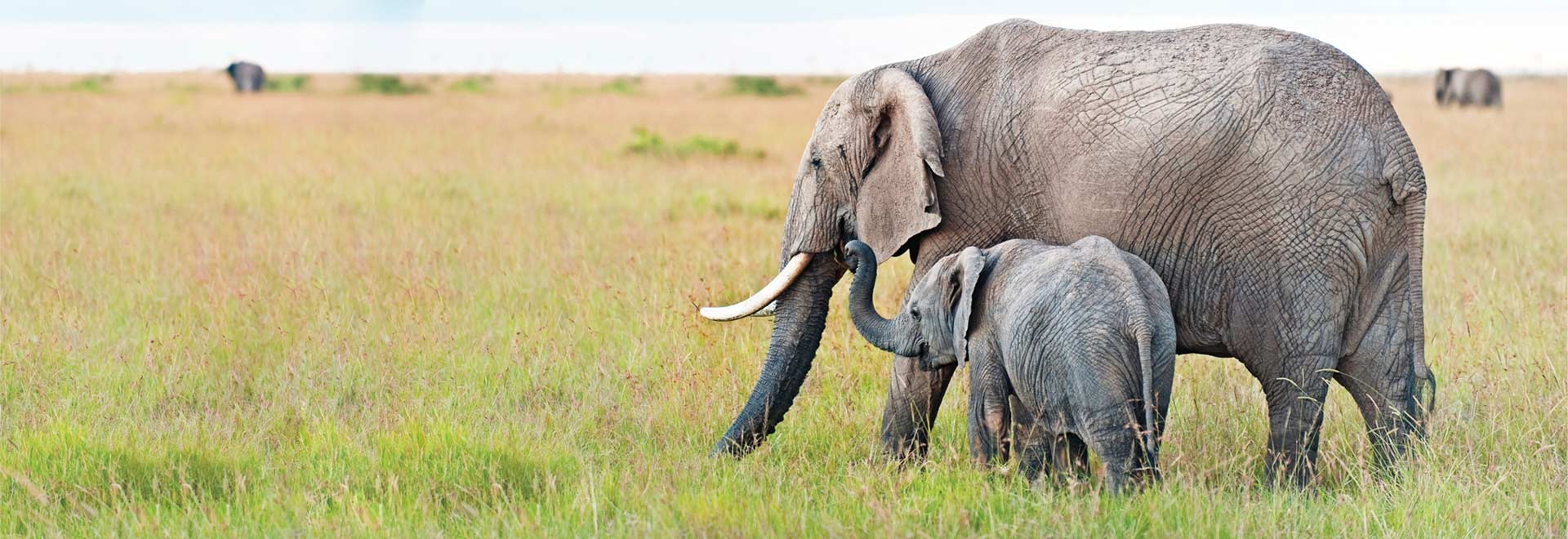
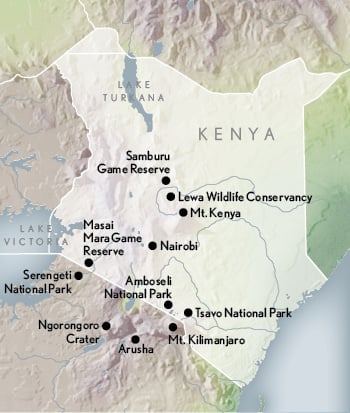

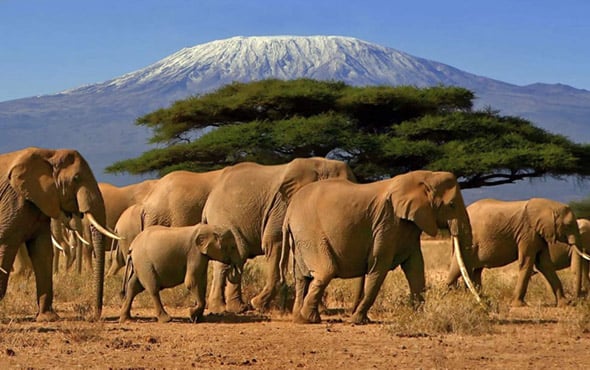

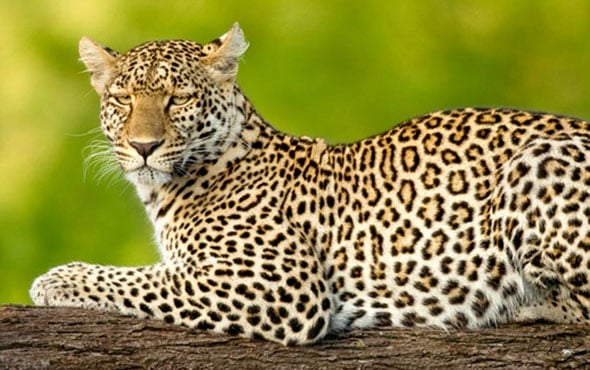
.jpg)

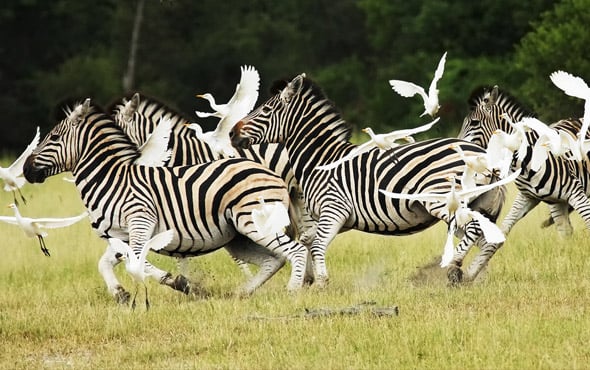
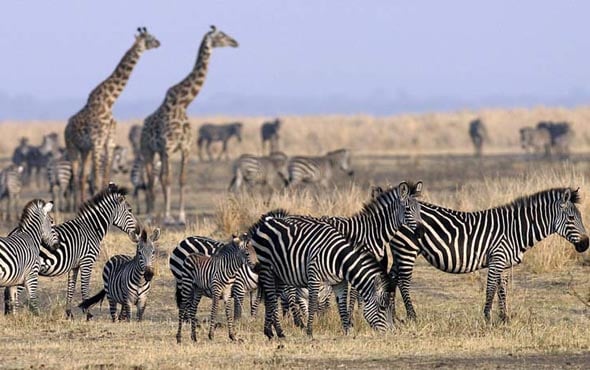
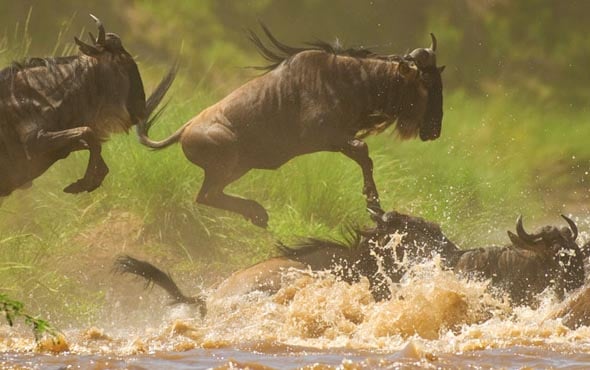
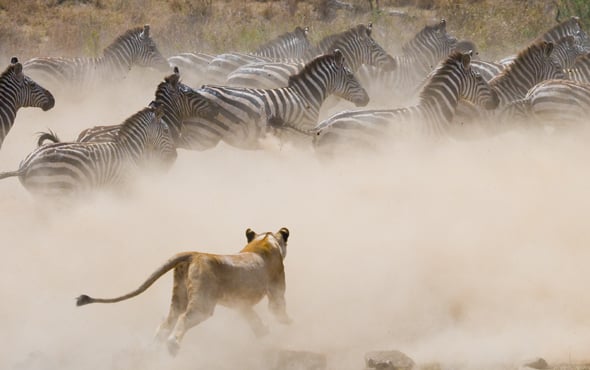
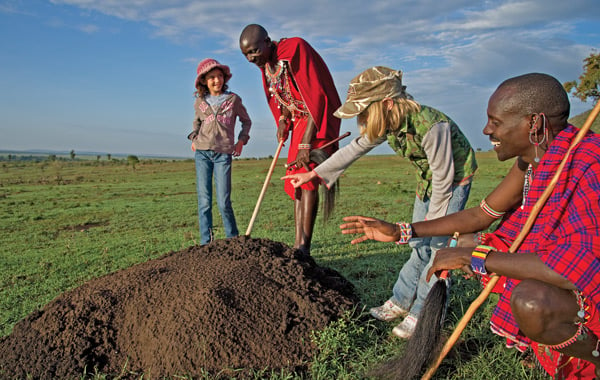

 The Americas
The Americas
 Europe, Middle East and Africa
Europe, Middle East and Africa Australia, NZ and SE Asia
Australia, NZ and SE Asia